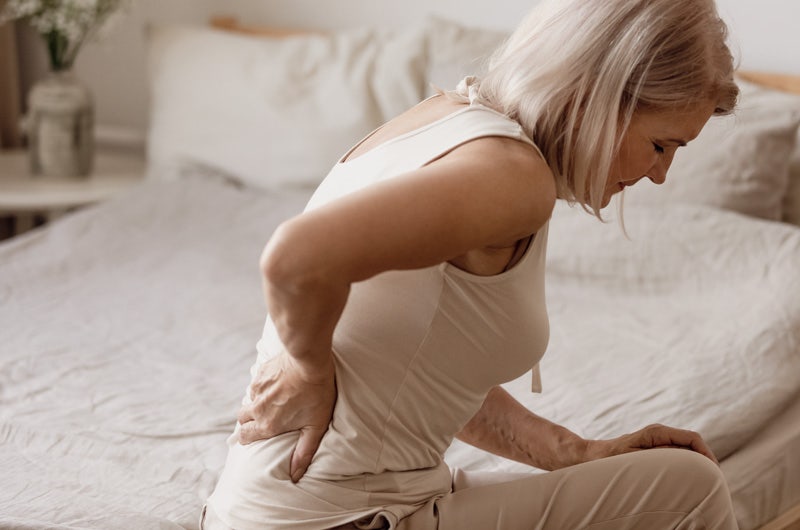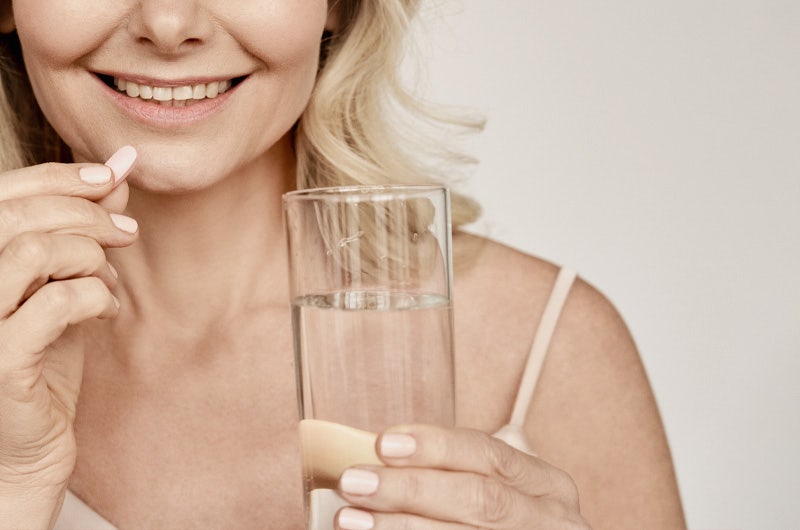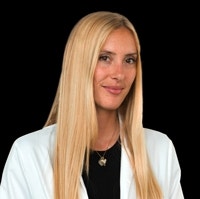Is there a diet for menopause?
Menopause is certainly one of the most delicate moments in a woman's life. Her arrival, accompanied by a drop in female hormones, favors a more or less significant slowdown in metabolism in most women. This can lead to unpleasant weight gains that seem difficult to manage and control, because the end of the fertile age determines the onset of various changes that primarily affect the hypothalamus, the "switchboard" of our autonomic life.
How then to face this physiological but difficult period, in order not to encounter both physical, psychological and mental difficulties? Let's find out together in this article!
A complicated physiological period

Before understanding how to manage the nutritional profile of this delicate phase of life, it is necessary to frame menopause from a physiological point of view. It generally occurs between 45 and 55 years of age (but it is also possible to incur early or late phenomena), and is the period in which the ovaries cease their activity and consequently the level of estrogen and progesterone in the blood decreases , causing some of the most common ailments and symptoms. These can be both neurodegenerative in nature (hot flashes, profuse sweating, palpitations, tachycardia, changes in blood pressure, dizziness, sleep disturbances and vaginal dryness) and psychoaffective in nature (irritability, fatigue, unstable mood, anxiety, demotivation and disturbances of the concentration).
The most important consequences due to the decrease of these hormones are however to be found in the increased risk of cardiovascular and osteoarticular pathologies. This happens because the estrogen produced by the ovaries ensures a lower amount of cholesterol in the blood, which inevitably tends to increase when menopause arrives. In fact, starting from premenopause, the ovaries undergo a slow decline: they become smaller and atrophic, and as the real menopause period approaches, the hormonal dosage changes, up to the complete absence of progesterone , to a significant drop in estrogen and aparticular increase in the levels of FSH (follicle stimulating hormone) and LH (luteinizing hormone). This hormonal change and decrease is correlated with the increased risk of suffering from osteoporosis, because estrogens are the main responsible for the tubular reabsorption of calcium in the kidney, favoring the conversion of vitamin D and increasing the synthesis of calcitonin.
Unfortunately, many women suffer from this pathology, characterized by the loss of mass and resistance of the skeletal system, which predisposes to an increased risk of fractures.
What to do

It is advisable to immediately try to prevent any cardiovascular and osteoarticular complications, putting in place a few simple precautions to our lifestyle. There are 3 fundamental factors that act synergistically with each other to better manage this phase:
- Balanced nutrition;
- Moderate physical movement;
- Targeted integration.
Physical movement is certainly of primary importance. It is not necessary to become competitive sportsmen, but it is absolutely necessary to practice moderate daily physical activity, suitable for the person, body size and age: it favors not only weight control, but also the protection of the bones and the reduction of annoying symptoms. Furthermore, it can be a not indifferent relief valve, thus also improving the emotional sphere.
To reach the "ideal weight" and fight the condition imposed by the decline in female hormones, it is necessary to ensure the intake of all the nutrients, suited to the needs of the changes characteristic of this phase of life. Menopause does not prevent anyone from acquiring the desired physical shape: we just have to learn not to deprive ourselves of what we need instead. Let's see how.
How to feed
There is no "strict diet" to help manage menopause. However, there are common guidelines that can help us, improving some of the symptoms and allowing us not to risk developing major diseases.

The preferable foods in this phase of life are those able to guarantee an adequate supply of nutrients to make up for the estrogen deficiency: in this sense it is good to pay attention to unsaturated fatty acids, fiber, potassium, calcium, zinc, vitamin C and vitamin E.
In general, it is advisable to follow a varied and balanced diet, paying particular attention to the quantity of fats and carbohydrates and the quality of protein sources. The biochemical aspect linked to fats is fundamental: due to the increased cardiovascular risk, attention should be paid to the levels of "bad" LDL cholesterol and blood triglycerides, preferring the use of "good" lipid sources, such as extra virgin olive oil, nuts and avocado. The portions of carbohydrate foods (such as pasta, bread and rice) should also be controlled: the tendency to hyperglycemia favors the synthesis of triglycerides, increasing their blood concentration.
In general, it would be better not to abuse sweets and limit the consumption of alcohol and coffee , because they can worsen the absorption of calcium. Water is also vital: it is advisable to drink calcium bicarbonate waters (with a medium-high fixed residue), which have a high bioavailability of calcium and magnesium, as well as guaranteeing a good state of hydration.
Eating well does not mean eating a lot or a little: it is the choice of type and quality of food that makes the difference in the long term. In addition to fresh and seasonal fruit and vegetables, it is advisable to encourage the consumption of Protein of high biological value, in particular fish, white meats and low-fat dairy products . Preferably we should move towards blue fish, because they are a source of vitamin D and increase the frequency of consumption of nuts, legumes and cabbage (rich in calcium and magnesium).
The help of correct integration
An additional support, capable of making a difference, comes from integration: to keep this delicate period under control and counter the effects of age and hormonal deficiency, it may be useful to resort to the use of plant extracts and supplements, to guarantee us all essential nutrients.

Among the important supplements, we certainly find Calcium, Magnesium, Melatonin, essential fatty acids (from the Omega series), vitamin D, vitamin K, isoflavones and phytoestrogens .
Calcium is a fundamental mineral for the body, aimed at maintaining the correct turnover of bone tissue; if not correctly addressed, however, it risks accumulating in the arteries, generating calcified plaques. To convey it to the bone, it is good to combine it with the intake of vitamin K2: a recently discovered fat-soluble vitamin, belonging to the vitamin K family, whose scientific name is menaquinone.
The minimum recommended quantity is equal to 25-50 mcg per day and the food intake alone, however, is unlikely to meet this requirement.
Magnesium deficiency is often related to the onset of depression and anxiety; in fact, the nervous system in the period of menopause is put to the test, and it is important to integrate this mineral which has an immediate antidepressant effect, restoring the psycho-physical balance.
Vitamin D can also contribute to well-being in menopause, reducing the typical ailments of the period and lowering the risk of developing osteoporosis and bone fragility, and the intake of melatonin in the evening seems to alleviate hot flashes and morning depression.
An important role is also played by isoflavones and plant extracts: in fact, the latest scientific research has shown that a high concentration of isoflavones, molecules very similar to estrogens, and flavonoids, can improve the quality of life of women in menopause, counteracting many of the symptoms. typical of the phase called "climacteric" (the period of premenopause preceding the total disappearance of the menstrual cycle). In fact, thanks to the chemical structure very similar to that of estrogens, isoflavones can mimic or modulate the action of these hormones. This action derives from the binding and consequent interaction with estrogen receptors, often activating the physiological processes associated with them, despite having a lower potency than the "original" hormones.
In particular, a good quantity of isoflavones can be obtained from various natural substances, often contained in supplements developed "ad hoc" for this delicate phase of life. Among these, particular attention should be given to the red clover extract , obtained from the officinal plant Trifolium pratense , which contains various isoflavones ( genistein, daidzein, formononetin and biochanin A ) capable of exerting antioxidant, hypocholesterolizing and anti-osteoporotic effects, favoring mineralization instead. bone, with kudzu root extract (Puerraria lobata), a wild plant from Japan, used by ancient Chinese medicine and useful for improving the symptoms of menopause thanks to the presence of puerarine isoflavone , easily assimilated and with high stability and bioavailability, and Angelica, one of the most used remedies in medicine Chinese and herb belonging to the Apiacea family, useful in the treatment of menstrual disorders, in menopause and in case of uterine cramps and is therefore also called " female ginseng ".
Conclusions
Menopause is a particular and physiological period in a woman's life, which cannot be prevented but which can be supported and dealt with in the best possible way. In summary, of fundamental importance are certainly:
- Nutritional support and sports activities, which can reduce any weight gain (and indirectly improve mood);
- Psychological support, in the event that mood disorders and depression occur, should not be underestimated;
- The integration of products to support deficiencies and prevent the onset of annoyances;
- Correct hydration, essential to help skin and mucous membranes trophism, to provide the right amount of calcium and to support vaso-regulation and blood pressure.
Bibliography
Santoro N, Epperson CN, Mathews SB. Menopausal Symptoms and Their Management. Endocrinol Metab Clin North Am. 2015 Sep;44(3):497-515. doi: 10.1016/j.ecl.2015.05.001. PMID: 26316239; PMCID: PMC4890704.
Johnson A, Roberts L, Elkins G. Complementary and Alternative Medicine for Menopause. J Evid Based Integr Med. 2019 Jan-Dec;24:2515690X19829380. doi: 10.1177/2515690X19829380. PMID: 30868921; PMCID: PMC6419242.
Messina M. Soy foods, isoflavones, and the health of postmenopausal women. Am J Clin Nutr. 2014 Jul;100 Suppl 1:423S-30S. doi: 10.3945/ajcn.113.071464. Epub 2014 Jun 4. PMID: 24898224.
Chen MN, Lin CC, Liu CF. Efficacy of phytoestrogens for menopausal symptoms: a meta-analysis and systematic review. Climacteric. 2015 Apr;18(2):260-9. doi: 10.3109/13697137.2014.966241. Epub 2014 Dec 1. PMID: 25263312; PMCID: PMC4389700.
Capozzi A, Scambia G, Lello S. Calcium, vitamin D, vitamin K2, and magnesium supplementation and skeletal health. Maturity. 2020 Oct;140:55-6 doi: 10.1016/maturity.2020.05.020. Epub 2020 May 30. PMID:32972636.
Purdue-Smithe AC, Whitcomb BW, Szegda KL, Boutot ME, Manson JE, Hankinson SE, Rosner BA, Troy LM, Michels KB, Bertone-Johnson ER. Vitamin D and calcium intake and risk of early menopause. Am J Clin Nutr. 2017 Jun;105(6):1493-1501. doi: 10.3945/ajcn.116.145607. Epub 2017 May 10. PMID: 28490509; PMCID: PMC5445672.
Echeverria V, Echeverria F, Barreto GE, Echeverría J, Mendoza C. Estrogenic Plants: to Prevent Neurodegeneration and Memory Loss and Other Symptoms in Women After Menopause. Front Pharmacol. 2021 May 20;12:644103. doi: 10.3389/fphar.2021.644103. PMID: 34093183; PMCID: PMC8172769.
Dietz BM, Hajirahimkhan A, Dunlap TL, Bolton JL. Botanicals and Their Bioactive Phytochemicals for Women's Health. Pharmacol Rev. 2016 Oct;68(4):1026-1073. doi: 10.1124/pr.115.010843. PMID: 27677719; PMCID: PMC5050441.
Kargozar R, Azizi H, Salari R. A review of effective herbal medicines in controlling menopausal symptoms. Electron Physician. 2017 Nov 25;9(11):5826-5833. doi: 10.19082/5826. PMID: 29403626; PMCID: PMC5783135.
Qin Y, Niu K, Zeng Y, Liu P, Yi L, Zhang T, Zhang QY, Zhu JD, Mi MT. Isoflavones for hypercholesterolaemia in adults. Cochrane Database Syst Rev. 2013 Jun 6;(6):CD009518. doi: 10.1002/14651858.CD009518.pub2. PMID: 23744562.



Comments
Write a comment about the article